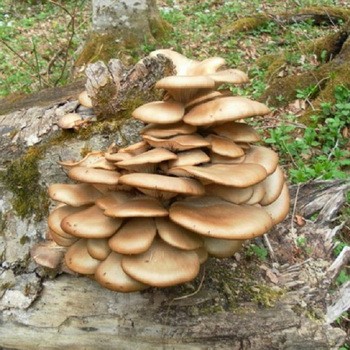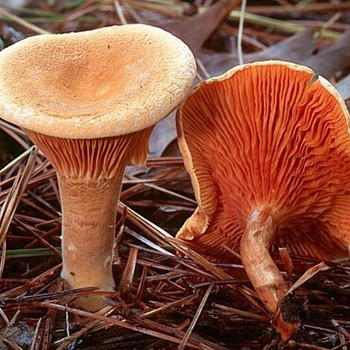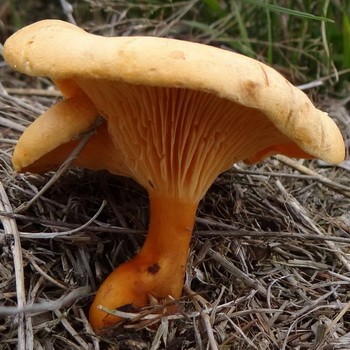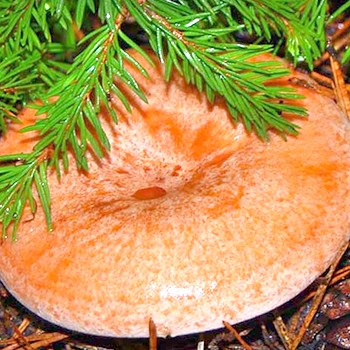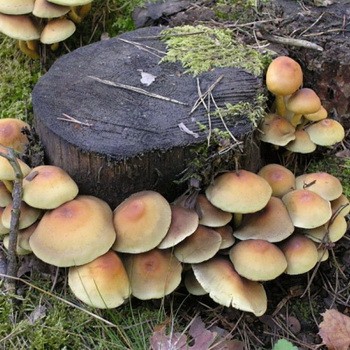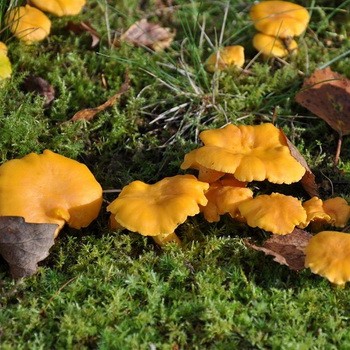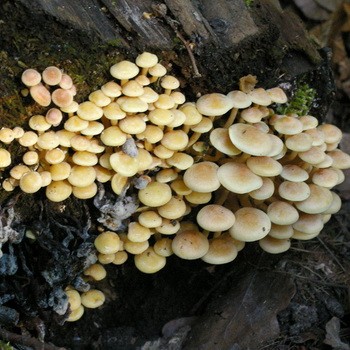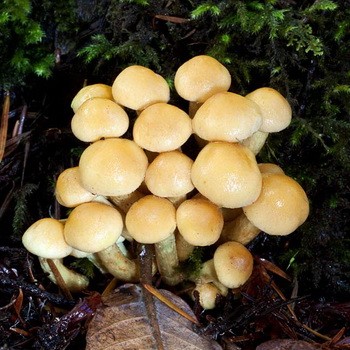Are false chanterelles poisonous and how to distinguish them from edible species?
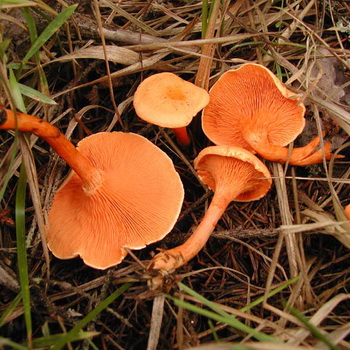 Fans of “mushroom hunting” appreciate the chanterelles not only for their excellent taste, but also for the fact that in their pulp there are no signs of worminess and damage by insects. All this thanks to the substance chitinmannosis, which has the ability to destroy helminths and their eggs.
Fans of “mushroom hunting” appreciate the chanterelles not only for their excellent taste, but also for the fact that in their pulp there are no signs of worminess and damage by insects. All this thanks to the substance chitinmannosis, which has the ability to destroy helminths and their eggs.
Many people like to collect chanterelles, because they grow in large colonies. If you find yourself in front of a few pieces, look around, look under the fallen leaves or moss. From one glade you can collect 2-3 buckets of these delicious fruiting bodies. But novice mushroom pickers are concerned about the question: are chanterelles poisonous?
Content
Are there false chanterelles and how poisonous are they?
In nature, there are representatives of an inedible species, which are called false chanterelles, they can be poisoned. In addition, the situation may be aggravated by the individual intolerance of fungi to the human body. Then another question arises: poisonous false foxes or not, and if so, how much?
First you need to figure out what real foxes look like, so that even an inexperienced mushroom picker can distinguish an edible product from an inedible one. Real chanterelles usually grow in mixed and coniferous forests, starting from the middle of summer and ending with the month of October. Mushrooms have an orange-yellow hue with a characteristic pleasant aroma of pulp. Hats funnel-shaped with wavy edges and plates, descending almost to the middle of the legs.
False chanterelles are not poisonous, although poisoning can be obtained from them. Usually it is not strong, but does not bode well for your body.
However, poisonous mushrooms, similar to foxes called orange talkers, can still pose a danger to humans. It is them that some mushroom pickers confuse with the real fox, growing in the same forests.
How to distinguish foxes from poisonous mushrooms, so as not to harm yourself and your loved ones with serious poisoning? There are several factors that help to correctly recognize inedible chanterelles:
- false chanterelles never grow in large groups, like real species;
- orange talkers grow on rotting or old trees, and edible species only on the ground;
- inedible chanterelles have an unpleasant odor, while real ones smell like peaches or apricots;
- hats of false mushrooms have a regular rounded shape with smooth edges, and real chanterelles - funnel-shaped with wavy edges.
We offer you to see a photo of poisonous chanterelles, clearly showing their main differences from edible mushrooms:
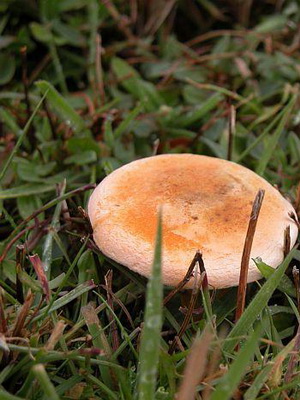
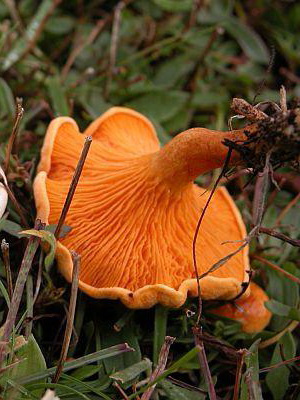
If you nevertheless got poisoned with false foxes - do not worry, this does not constitute a danger to humans. With proper treatment, the patient recovers easily and quickly.
How else can you distinguish poisonous foxes from edible mushrooms?
How else can you distinguish poisonous chanterelles from edible ones and improve your experience in picking mushrooms?
- Poisonous chanterelles have a smaller size of hats, not reaching 6 cm in diameter;
- the plates are thin, often repeating and do not pass into the leg of the mushroom, as in real ones;
- pressing on a poisonous mushroom its shade does not change at all, unlike real mushrooms;
- the smell and taste of the flesh of false chanterelles is very unpleasant compared to edible.
There is also another kind of false chanterelle - is it poisonous? We are talking about gray fox, which in taste is inferior to the edible species. The shape of the cap and legs of the gray chanterelle strongly resembles the real one, however it has a brown or gray tint, which makes the fruit body unattractive to mushroom pickers.
It is worth saying that in many reference books the poisonous fox is considered to be a conditionally edible fungus. Many mushroom pickers collect these species, although they are of lower quality than real chanterelles. But if they are cooked correctly: soak thoroughly for 2-3 days, boil for 20 minutes with salt and spices, then poisoning can be avoided. But still, experts recommend not eating these mushrooms, especially if there are problems with the digestive system. In the presence of harmful toxins, these chanterelles can be poisonous. People with sensitivity to these substances show the first signs of poisoning: nausea, vomiting, dizziness, abdominal pain, and diarrhea. When the first symptoms appear, you need to immediately call an ambulance, because the preservation of human health will depend on your reaction.
Knowing that there are no deadly poisonous chanterelles on the territory of our country, you can safely go to the nearest forest in search of real edible red beauties. However, this is only possible provided that you do not collect chanterelles in the zones of industrial and chemical enterprises, as well as near highways.
